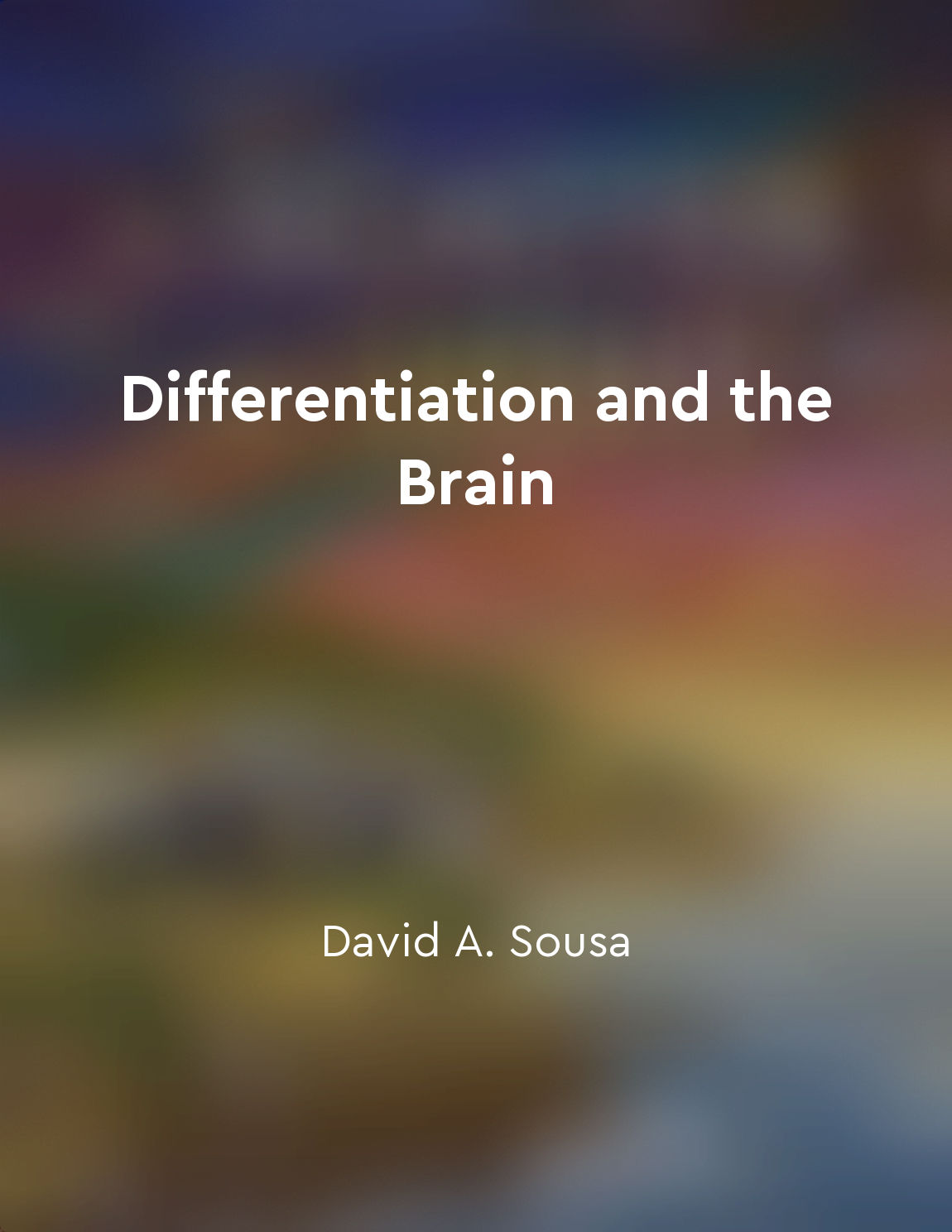Adjusting instruction based on student needs is a crucial part of differentiation from "summary" of Differentiation and the Brain by David A. Sousa,Carol A. Tomlinson
To effectively differentiate instruction, educators must have a deep understanding of their students' individual needs. This requires a willingness to adapt and modify teaching strategies based on the unique learning styles, abilities, and preferences of each student. By adjusting instruction to meet the diverse needs of students, teachers can create a more inclusive and supportive learning environment that promotes success for all learners. One important aspect of differentiation is recognizing that students come to the classroom with a wide range of backgrounds, experiences, and prior knowledge. This means that a one-size-fits-all approach to teaching is not effective and can lead to disengagement and frustration for many students. By tailoring instruction to address the specific needs of each student, educators can better support their academic growth and development. In order to effectively adjust instruction, teachers must gather data on their students' strengths, weaknesses, and learning preferences. This information can be collected through formal assessments, informal observations, and conversations with students. By using this data to inform their instructional decisions, teachers can create learning experiences that are meaningful, engaging, and relevant to each student. Furthermore, differentiation requires educators to be flexible and open to trying new approaches in order to meet the needs of diverse learners. This may involve providing additional support or resources for struggling students, challenging and extending the learning of advanced students, or offering alternative assessments to accommodate different learning styles. By being responsive to the needs of their students, teachers can create a more inclusive and equitable learning environment that values and celebrates the diversity of all learners.- Adjusting instruction based on student needs is not just a good practice – it is essential for promoting student success and achievement. By recognizing and responding to the individual needs of students, educators can create a more engaging and supportive learning environment that fosters academic growth and development for all learners.
Similar Posts
Reading is the foundation of English education
The act of reading is at the core of English education. It is through reading that students develop essential language skills, ...
Every brain is wired differently
The brain is a complex organ that plays a critical role in shaping who we are as individuals. It is responsible for processing ...
Students thrive when given autonomy and ownership of their learning
In our discussion of education, we have often emphasized the importance of allowing students to take ownership of their learnin...
Teachers should provide opportunities for students to practice essential skills
As educators, our primary responsibility is to ensure that our students are equipped with the essential skills they need to suc...
Learning should be relevant to students' lives and experiences
When students find purpose and meaning in what they are learning, they are more likely to engage with the material and retain t...


